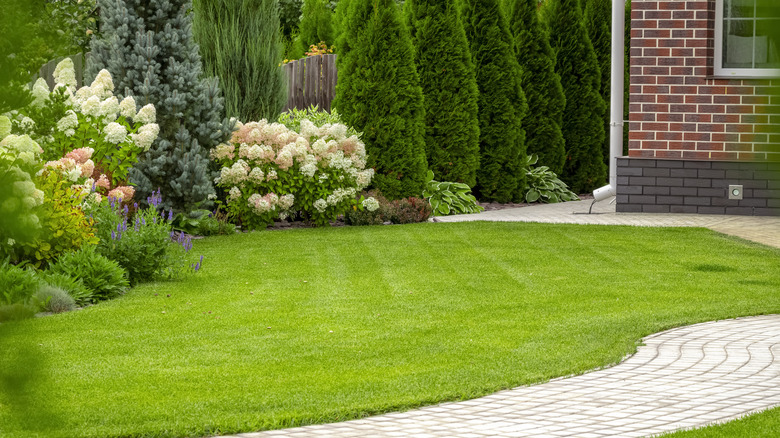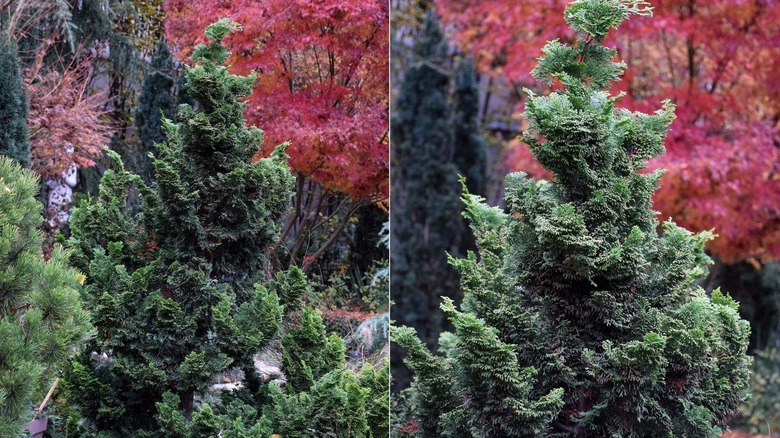This Martha Stewart-Approved Shrub Makes A Gorgeous Addition To Your Lawn
If you're looking to add a bit of drama to your lawn, look no further than the Chamaecyparis obtusa plant, often referred to as hinoki cypress. Originating from Japan, this bold, unusual-looking plant will lend any garden an impressive look, and it caught the eye of none other than Martha Stewart. Via The Martha Blog, the domestic goddess shared that she planted a handful of the gorgeous cypress shrubs on her farm located in Bedford, New York.
Alongside photos of her new hinoki cypress plants, Stewart wrote, "Last year I planted a group of large Chamaecyparis obtusa 'Filicoides' or Fernspray Hinoki cypress bushes along the carriage road ... They looked so beautiful, I decided to plant some more – 16 more! These bushes are large-growing, upright specimens with long, ascending branches – perfect for this area!" As Stewart said, Hinoki cypresses are perfect for lining a pathway due to the fact they're slow-growing (20 to 50 years to reach maximum size, to be exact) and won't intrude on a path by growing outward.
The shrub will complement any budding garden nicely
The dark green appearance and striking conical shape of the hinoki cypress plant makes it a good choice if you want to create some contrast with other taller plants. It's also a great option if you don't want your plants to crowd together due to its slow growth time. Unlike some other picks, your yard won't suddenly be overtaken by a hinoki cypress growing over some of the more delicate plants and flowers in your garden.
Martha Stewart shared via the blog above how she planted her hinoki cypress plants. Firstly, Stewart recommends digging a hole that's approximately two to five times larger than the root of the plant to give it room for optimal growth. When digging your hole, opt for slanted sides — again, to promote better growth. When they are in the process of growing, this type of cypress thrives with a medium moisture level and with access to full sun, so it's best to plant them somewhere that gives them this rather than in a partly shady area. When it comes to fertilizer, Stewart reiterated that one made specifically for evergreen shrubs should be used for best results.

